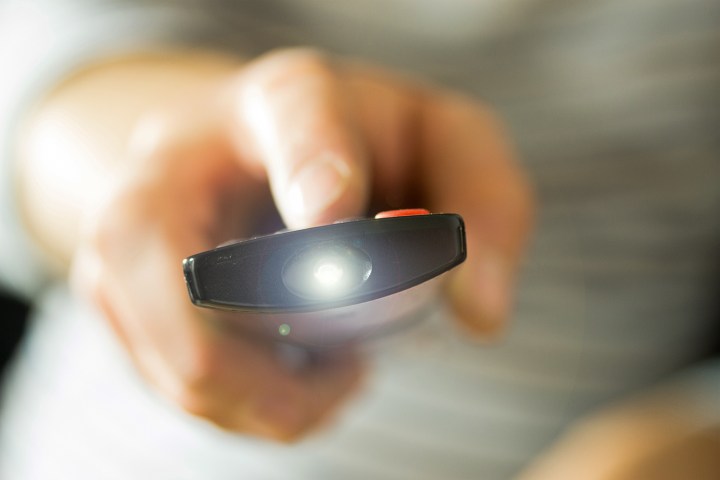
It turns out no level of dexterous digit mangling of the buttons would have mattered. As the AV crew apologetically explained to me afterward, the receiver was simply out of range. But tellingly, my most vivid memory from that day isn’t my frustration with the crew, it’s the oddly naked feeling I had on stage holding an ineffective remote. Having done many keynotes, the remote has become a part of me on stage, my thumb tapping the advance arrow without my even thinking about it as I hit my marks within a talk. Without it that day, I nearly felt I was missing an appendage.
As strange as it was, the sensation of physical loss I experienced is a sign of a broader bio-technical shift underway. We are rapidly moving toward a time when our everyday tech tools, and in particular our handheld and wearable devices, will feel as though they are — or may actually be — extensions of ourselves, rather than separate entities.
Change is in the air(waves)
Much of this phenomenon has to do with just two letters: RF. An abbreviation for radio frequency, RF waves are used in everything from Wi-Fi, to baby monitors, to FM radio, to communicate wirelessly. But it’s our handheld or strapped-on devices – our mobile phones, smartwatches, activity tracker wristbands and the like – and their use of RF that will drive bio-tech augmentation.
Surprisingly, we can even look to the far less sexy handheld, the TV remote, for a portentous glimpse of our future cyborg selves.
As we absorb these tiny advancements into our lives, eventually not having them quickly feels archaic.
For decades remote controls have operated on infrared (IR) technology, which requires line of sight to work — you have to aim the remote at the receiver for the signal to reach it. RF remotes, however, which have hit the mainstream in the last few years, allow the user to tap a button and reach the receiver without even seeing it, because RF waves travel through solid objects.
The advantages of RF remotes — not requiring line of sight; gaming applications (with the addition of accelerometers and gyroscopes) where one can swing her arms and create a mirror image of action on a screen; and with Roku’s remote, a headphone jack for outwardly silent viewing — are ostensibly minor. Yet sometimes those little details are what make the biggest impacts. It’s not for nothing that Roku’s headphone option has been dubbed the “marriage saver.” And while no longer needing to move your foot or the bowl of chips to change a channel seems an embarrassingly modest improvement over IR to get excited about, as we absorb these tiny advancements into our lives, eventually not having them quickly feels archaic.
It’s not hard to imagine a point where actually lifting your hand to aim at the TV will almost be an affront to modernity, the same way it is when your airline app on your phone craps out and you need to actually print a boarding pass at a kiosk. In one sense, of course, this is just an example of First Worlders being inconvenienced over trivialities. But on a deeper level, it highlights a disruption of the often imperceptible seamlessness of our products with ourselves.
You have to not see it to believe it
Perhaps the most pervasive yet rarely thought of effect of RF, and improved tech in general, is the aesthetic revolution of minimalism it has brought about. Think of someone’s home office 20 years ago, with its unruly tangle of wires to printers and fax machines, multiple phones, and clunky CPU towers. Compare it with the idealized spartan workspace of today, where nearly every device has shrunken in size, features a limited physical interface, and is, most notably, absent of wires.
This minimalism is more than cosmetic. Tech minimalism generally runs in tandem with functionality– usually the better a high tech device is, the more it can do in an ever smaller body. And the more functional our devices become, especially the portable or wearable ones, the more we are dependant on them. In turn, this utilitarian dependence takes on a psychological attachment leading to a projection of almost anthropomorphic importance. Our tools aren’t tools, they’re part of us.
Even without minimalism this relationship is apparent: It’s why a girlfriend of mine in college had a name for her beloved car. And why a carpenter surely feels a particular and peculiar bond to that one great hammer in his tool box (even if it could be replaced with an exact replica). Even our clothes are a technology in a philosophical sense, since they enhance our human capabilities. When you wear that old pair of jeans that fit perfectly, you’re likely no longer even aware that you are wearing them – this outside thing becomes one with yourself.
A vanishing line
Our new high-tech tools follow the same tradition, only with exponentially more profound effects. With a wearable electronic device that never leaves your body, or a handheld remote that effortlessly commands other objects into action, the seamlessness of tech and body integration is even more complete.
The more our tools advance, the more cyborg we will become.
Devices continue to shrink. Eventually, all applications will be embedded in one smartwatch, belt buckle, or molar filling, which we will control with voice commands and subtle gestures. Everything in our lives — the TV, thermostat, washer, toilet – will be linked on the Internet of Things, and easily controllable from this one little RF-enabled device. The divide between technology and body, almost needless to say, will simply vanish.
Today, we still tend to view tech devices as separate tools, distinct from us. But the more our tools advance, the more cyborg we will become. Our biological selves will be so integrated with our tools that the very notion of IRL (in real life) versus our online or connected selves will be a moot discussion.


